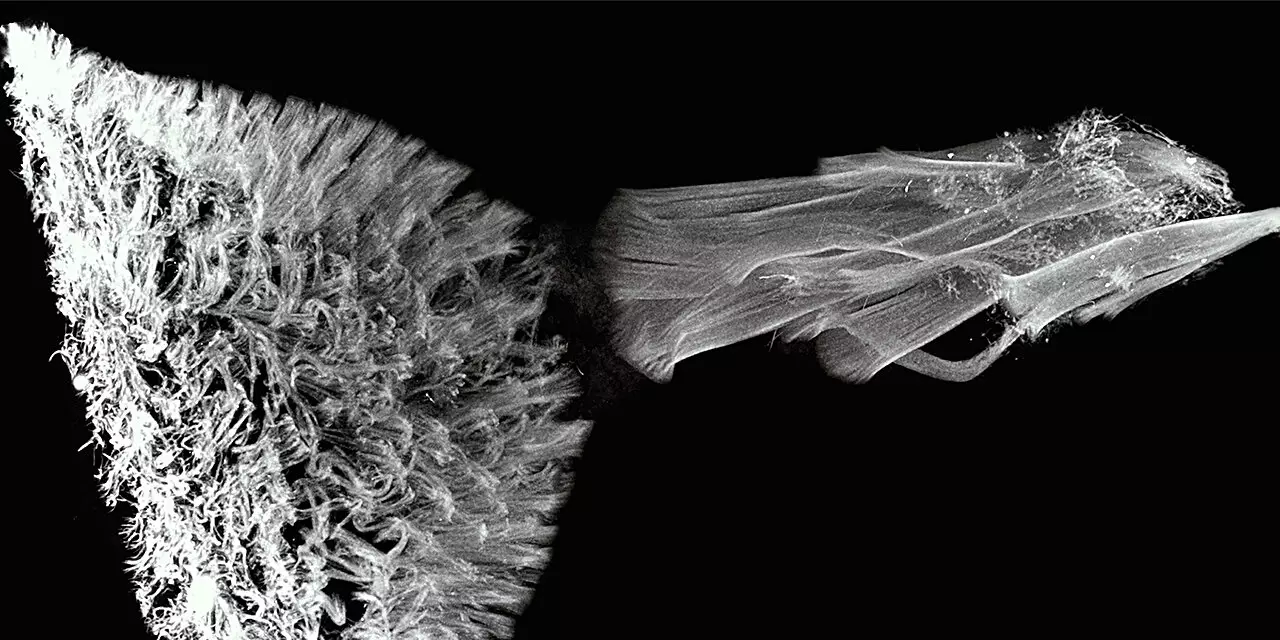Scientific progress often hinges on revolutionary ideas that challenge the status quo, and it is within this dynamic landscape that we find the work of the Kanso Bioinspired Motion Lab at the USC Viterbi School of Engineering. Their recent research, published in *Nature Physics*, epitomizes the essence of this transformative journey. The lab’s exploration into the morphology of ciliated organs—structures integral to fluid dynamics in various organisms—offers us a refreshing lens on how form and function are not just intertwined but are dynamically shaped by specific physiological needs.
The study examines two established models of ciliated organ function—the “flame” model and the “carpet” model—traditionally viewed as separate entities shaped through distinct evolutionary lines. The groundbreaking nature of this research lies not only in the findings themselves but also in the profound implications for our understanding of the evolutionary processes that precede these structures’ development.
Differentiating Between “Carpets” and “Flames”
At the heart of this inquiry is the recognition that many living organisms utilize cilia—tiny hair-like structures—to facilitate fluid transport in vital systems, including human respiratory pathways, reproductive organs, and even the brain’s ventricular system. Generally speaking, humans exhibit a “carpet” morphology characterized by a dense array of shorter cilia, whereas animals like certain types of fish and invertebrates display the “flame” structure, featuring fewer but longer ciliary units.
What’s captivating about the Kanso Lab’s work is their argument that the morphological differences between these two types of ciliated organs are not merely a matter of evolutionary divergence. Instead, the researchers propose a shift away from phylogenetics toward a functionality-based perspective: cilia are formed and adapted to meet the fluid pumping requirements unique to different species, thereby representing an innovative mechanical solution to specific biological challenges.
From Dichotomy to Continuum
Within their study, Kanso and her team have brilliantly reframed the traditional dichotomy of ciliated structures into a continuum informed by functional demands. This is a vital leap forward, not just conceptually, but also practically. By identifying key parameters such as lumen diameter and cilia-to-lumen ratio, they illustrate how traditional models—previously thought to be mutually exclusive—can indeed share underlying principles of design and operation.
This continuum proposes a unified fluid model, bridging the gap between carpets and flames, and allowing us to see both structures not as disconnected evolutionary branches but as manifestations of the same fluid-dynamic principles. Their findings reveal that at the extremes of the morphological spectrum, structures are optimized for rapid fluid flow and pressure generation—crucial for effective biological filtration and transport. Meanwhile, intermediate hybrid configurations strike a balance, optimizing efficiency by combining attributes from both morphologies.
Practical Implications: A New Era of Medical Insights
Beyond the theoretical advancement, the implications of this research hold significant promise for medical science. Diseases associated with ciliary dysfunction, such as bronchiectasis or hydrocephalus, could be better understood through this new lens. By improving our grasp of how cilia operate across various organ systems, researchers and clinicians may develop more effective strategies for treatment and intervention.
Moreover, the applications extend into the realm of organ-specific studies. The connection drawn between ciliary flames, which facilitate the expulsion of fluids, could significantly enhance our understanding of renal pathologies, a connection that has not been established in a meaningful way until now. Hence, this intricate exploration does more than just advance our biological understanding; it offers a framework for real-world applications that could improve patient outcomes.
A Path to Innovative Research Methodologies
Kanso Lab’s approach—a combination of experimental observations and mathematical modeling—sets a precedent for tackling challenging problems in science and engineering. By successfully measuring ciliary beats and fluid flow dynamics in intact structures, they not only address a long-standing gap in research but pave the way for future innovations in the field. The idea that we can reframe complex dichotomies into more unified models resonates deeply in an increasingly interdisciplinary scientific landscape.
This groundbreaking research from USC Viterbi is not simply a validation of existing theories; it’s a clarion call for scholars to revisit foundational understandings with fresh eyes, inspiring a new wave of inquiry that promises to further unravel the complexities of life’s intricate designs. The narrative of scientific exploration, beautifully embodied by this work, illustrates our relentless pursuit of knowledge—an endeavor characterized by continuous questioning, discovery, and ultimately, profound understanding.


Leave a Reply